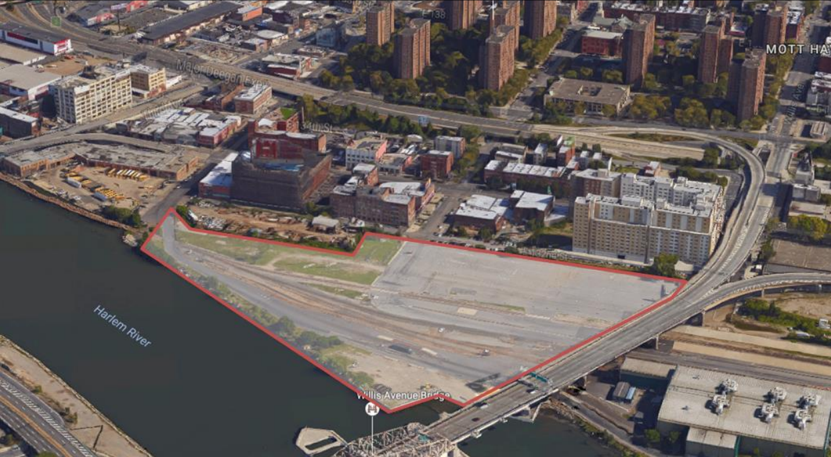Because developing the Special Harlem River Waterfront District along with Somerset’s planned 6 towers in Port Morris isn’t enough, New York State Empire State Development released a request for expressions of interest to deck almost 13 acres of our waterfront to see developer interest—with the full blessings of Bronx Borough President Ruben Diaz Jr.
In Crain’s New York, Diaz says,”New deck construction has the potential to bring transformative development projects to many Bronx neighborhoods,” Diaz said in a statement. “I look forward to examining the level of interest this [request] brings to the Harlem River Yards and how that interest could inform future opportunities for platform projects.”
Rents and property values in the immediate area are skyrocketing—a neighborhood dominated by New York City Housing Authority where more and more businesses continue to open their doors yet out of the reach of the majority’s pockets.
It’s becoming more apparent that the neighborhood is turning into a literal tale of two cities; a neighborhood where luxury is found on one side of the highway and a few blocks over, thousands of residents live in poverty at NYCHA’s Mill Brook and Mitchel Houses.
Rather than focusing on the Bronx Borough President’s gentrification agenda, New York State needs to invest in our residents to help lift them from poverty.
Our schools are still performing terribly, our kids have practically no access to after school sports programs compared to kids in affluent areas of the city.
Our adults are either unemployed or underemployed as opportunities for decent living wage jobs are scarce.
New York State and our borough president need to refocus their properties rather than trying to turn our borough into the “New Bronx” or the next Brooklyn.


You must be logged in to post a comment.